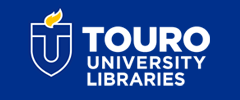NYMC Faculty Publications
Hydrogen Peroxide via Thromboxane A2 Receptors Mediates Myogenic Response of Small Skeletal Muscle Veins in Rats
Author Type(s)
Faculty
DOI
10.3233/CH-131709
Journal Title
Clinical Hemorheology and Microcirculation
First Page
393
Last Page
407
Document Type
Article
Publication Date
1-1-2013
Keywords
Animals, Bridged Bicyclo Compounds, Heterocyclic, Fatty Acids, Unsaturated, Hydrazines, Hydrogen Peroxide, In Vitro Techniques, Indomethacin, Male, Muscle, Skeletal, Pressure, Rats, Rats, Wistar, Receptors, Thromboxane A2, Prostaglandin H2, Thromboxane A2, Veins
Disciplines
Medicine and Health Sciences
Abstract
UNLABELLED: We aimed to test two hypotheses: (1) isolated small veins develop substantial myogenic tone in response to elevation of intraluminal pressure, (2) H2O2 contributes to the mediation of myogenic response via activation of arachidonic acid (AA) cascade and release constrictor prostaglandins.
METHODS: Small veins were isolated from gracilis muscle of male rats, then cannulated. Changes of diameter to increases in intraluminal pressure, H2O2 and arachidonic acid in the presence and absence of various inhibitors were measured by videomicroscope and microangiometer. At the end of experiments the passive diameter were obtained in Ca2+ -free PSS solution.
RESULTS: Isolated rat gracilis muscle small veins developed a substantial myogenic tone in response to increases in intraluminal pressure (1-12 mmHg). Calculated maximum myogenic tone was 70 ± 5% at 10 mmHg. Presence of catalase or indomethacin or SQ 29,548 reduced significantly the pressure-induced myogenic response. Also, H2O2 (10-9-10-5 M) and arachidonic acid (10-7-10-4 M) elicited concentration dependent constrictions, which were inhibited by the presence of indomethacin or SQ 29,548.
CONCLUSION: We propose that both myogenic response and pressure-induced release of H2O2 play important roles in regulating the vasomotor function of venules both in physiological and pathological conditions.
Recommended Citation
Debreczeni, B., Gara, E., Veresh, Z., Marki, A., Racz, A., Matics, R., Hamar, J., & Koller, A. (2013). Hydrogen Peroxide via Thromboxane A2 Receptors Mediates Myogenic Response of Small Skeletal Muscle Veins in Rats. Clinical Hemorheology and Microcirculation, 54 (4), 393-407. https://doi.org/10.3233/CH-131709


